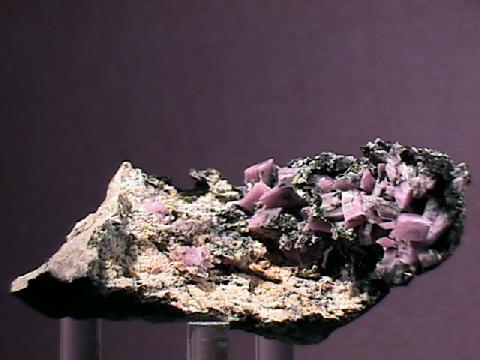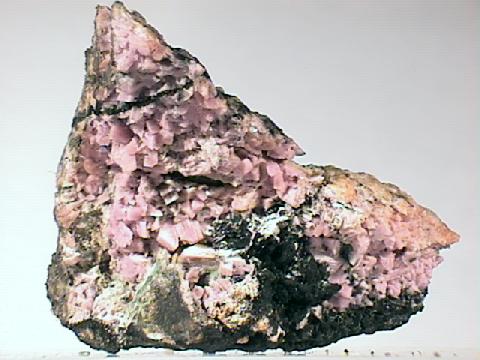 The Mineral INESITE
The Mineral INESITE
- Chemistry: Ca2Mn7Si10O28(OH)2 - 5H2O, Hydrated Calcium Manganese Silicate Hydroxide.
- Class: Silicates
- Subclass: Inosilicates
- Uses: Only as mineral specimens.
Specimens
Inesite is not a common mineral in rock shops and in mineral displays. However it can form attractive pink or rose colored specimens that are sought after by mineral collectors. The commonly seen prismatic crystals have a slanted or "chisel-shaped" termination. At first glance the shorter crystals may be mistaken for rhombohedrons which have six equally slanted faces. Inesite will show only one steeply slanted face, while the other faces have a much less inclined slant. This is important for identification because the pink to rose colored mineral rhodochrosite forms rhombohedrons. Another similar looking mineral is the silicate rhodonite. Fortunately rhodonite lacks any steeply inclined faces and is normally blocky, not prismatic.
PHYSICAL CHARACTERISTICS:
- Color is pink to orange or flesh-red to rose.
- Luster is vitreous.
- Transparency: Crystals are generally translucent.
- Crystal System is triclinic; bar 1
- Crystal Habits include prismatic crystals with chisel-like terminations. Also tabular and fibrous and in radiating aggregates and sphericules.
- Cleavage is good in one direction and perfect in another.
- Fracture is uneven.
- Hardness is 6
- Specific Gravity is approximately 3.0 (average for translucent minerals)
- Streak is pale pink.
- Other Characteristics: Tarnishes to a brown color.
- Associated Minerals are rhodonite, serpentine, axinite, rhodochrosite and apophyllite.
- Notable Occurrences include New Broken Hill Mine, Australia; Nanzenbach, Germany; Trinity Co., California, USA and Durango, Mexico.
- Best Field Indicators are crystal habit, color, associations and luster.























